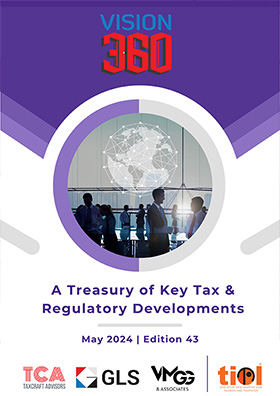Transfer Pricing: Use of multiple year data for comparability analysis would now be allowed
JULY 11, 2014
By Maulik Doshi, CA & Sunil Nayak, CA
YESTERDAY, the Finance Minister (FM) in his Budget speech proposed to amend the existing transfer pricing regulations to allow the use of multiple year data for the purpose of margin analysis of the comparables. However, this proposition, surprisingly, is not reflected in the Finance Bill tabled in Parliament. It appears that it would be given effect by amending the Income Tax Rules.
As per existing provisions of Transfer Pricing Regulations, only single year data (i.e., pertaining to the year under review) is allowed to be used for margin analysis of the comparables, with the exception that data pertaining to a period not more than two years prior to the relevant financial year could also be considered, only if such data reveals fact which could have influence on the determination of transfer price relating to the transactions being compared. The challenge was that the entire onus on proving that the earlier year data has influence on determining transfer price was on the tax payer. Without exception, in cases where the tax payer had used multiple year data in their transfer pricing studies, the Transfer Pricing Officer (TPO) rejected the same. In some cases, use of such multiple year data was used as a pretext to reject entire study or the search process. Unfortunately, in all such cases, even the ITAT supported the view of the TPO and have held that unless taxpayer demonstrates how earlier year data influences the prices the tax payer cannot resort to multiple year data and have to use the data pertaining to that financial year.
The drawback of using single year/latest year data is that at times the operating results of the comparables are affected due to fluctuation in the economy, industry or even in the business in which tax payer operates. Even the product and life cycle of the enterprise also varies from year to year and industry to industry. There were numerous instances where the same comparable company shows significant variation in the operating margins over a period of 3-5 years. This distorts the average operating results to be considered for computing arm's length price (ALP).
The OECD guidelines 2010 also advocates the use of multiple year data in paragraph 3.77 as under:
"Multiple year data will also be useful in providing information about the relevant business and product life cycles of the comparables. Differences in business or product life cycles may have a material effect on transfer pricing conditions that needs to be assessed in determining comparability. The data from earlier years may show whether the independent enterprise engaged in a comparable transaction was affected by comparable economic conditions in a comparable manner, or whether different conditions in an earlier year materially affected its price or profit so that it should not be used as a comparable."
The Indian regulations would now be consistent with the OECD Guidelines, and would improve the comparability analysis.
Even, UN Transfer Pricing Guidelines supports the use of multiple year data.
The use of multiple year data allows the data to be better harmonised, as it tends to average the results over a period of time. Multiple year data can also uncover relevant abnormal economic factors affecting the results, such as strikes or other adverse conditions. Such an approach also tries to test the data thrown up in typical business cycles and thus eliminates the risk of testing data of only a particularly bad or good year. Therefore, a cumulative value or data pertaining to multiple years would be more appropriate to guard the taxpayers against such distorted margins. In certain industries like automotive, shipping, etc which are more cyclical in nature, use of multiple year data may give a better standard of comparison as against use of single year data.
The introduction of multiple year data concept for computing the margins is definitely a welcome move from taxpayer's perspective. However, the government should clarify on the following:
(a) Number of years for which data can be used – worldwide most transfer pricing regulations allow 3-5 years data to be used;
(b) The computation mechanism by using the multiple year data. Ideally, based on multiple year data, a weighted average profit level indicator (PLI) for each comparable should be computed. The range/arithmetic mean can then be constructed using the weighted average PLI of each comparable.
(c) What implication would be there on use of multiple year data on the application of filters and selection of comparable companies? For instance, would the RPT filter be applied for all the years and therefore if the company fails RPT filter in any one of the years, would the company be rejected? Similarly, how would the chronically loss making companies be looked upon in case of use of multiple year data?
The amendments should clarify the above aspects to provide certainty to the tax payer.
The use of multiple year data has been on the wish list of all the tax payers and trade bodies right from the day of introduction of transfer pricing regulations in India. With this change, the FM has made a significant move to align Indian regulations with the global best practices.
Now that he has given into this demand, one becomes greedier and wishes that he applies this retrospectively! That will reduce existing litigation to great extent.













